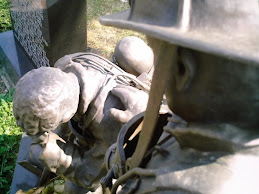 Walter Isaacson’s biography Steve Jobs presents Apple’s creator as a passionately driven producer that demanded excellence, both of him and others, and who was beset by intense emotionalist tendencies.
Walter Isaacson’s biography Steve Jobs presents Apple’s creator as a passionately driven producer that demanded excellence, both of him and others, and who was beset by intense emotionalist tendencies.Jobs’ legacy is that he primarily transformed existing systems into innovative products, from the Macintosh to the iPad — which others either couldn’t create or even foresee. As Isaacson writes: “On the day he unveiled the Macintosh, a reporter from Popular Science asked Jobs what type of market research he had done. Jobs responded by scoffing, ‘Did Alexander Graham Bell do any market research before he invented the telephone?’” (p.170)
Jobs embedded in Apple’s DNA the premium he put on integration, whether it was software and hardware; aesthetics and engineer/exterior design; or multiple products — computers, phones, music players — into singular devices such as the iPhone and iPad.
While Isaacson lauds and emphasizes Jobs’ masterful work, he paints with a heavy brush when portraying his relationships with others. Here, his motif is Jobs’ “reality distortion field” — a term his colleagues coined to describe what is a basically a package deal that includes examples of putting an “I wish” above a “what is”; pushing his workers to meet seemingly impossible deadlines that they sometimes met; and outright deception, as when he tried to deny fathering his first child. Moreover, to Jobs, there was usually no middle ground between your ideas or work: they were either brilliant or “shit.”
Yet Jobs was also a straight shooter, often harshly so, and so he’s painted sensationally as an insensitive jerk. When asked about this characterization, Jobs basically replied that his honesty was necessary to rid Apple of anyone other than A players.
But in writing his chapter on Jobs’ legacy, Isaacson concludes: “Dozens of the colleagues whom Jobs most abused ended their litany of horror stories by saying that he got them to do things they never dreamed possible.” (p.565)
Unfortunately, Isaacson falls short of truly uncovering the particular philosophic ideas that drove Jobs’ trailblazing work. He mostly writes about them superficially (e.g., Jobs’ love of “simplicity” in his products is attributed to his beliefs in Zen Buddhism), and often Isaacson explains his insights in terms of “instincts”/“intuition,” as did Jobs.
Of course, this is to be expected in our anti-philosophical age, as well as from a biographer who was a former editor at Time and a chairman at CNN, neither news organization of which represents objective journalism. Obviously, like most modern biographers, Isaacson felt compelled to “balance” every prominent personality and character trait.
Ultimately, while Isaacson is incapable of concluding that Jobs was a moral giant for his outstanding innovations, his biography nevertheless manages to evoke a spirit that projects this fundamental truth and makes it a particularly worthy read.
































+-+June+2009.jpg)










